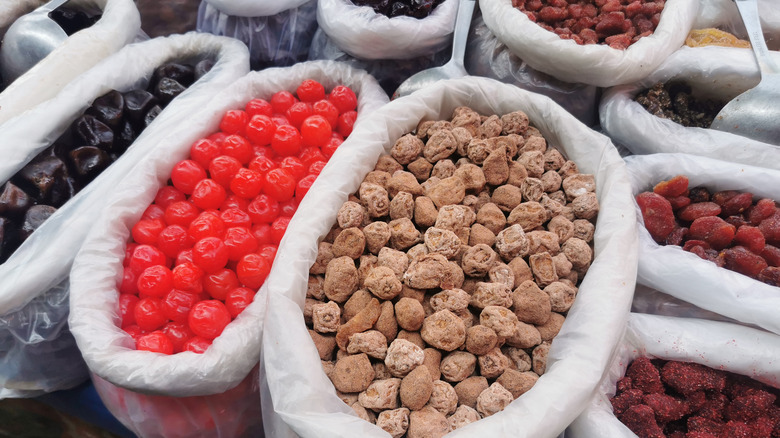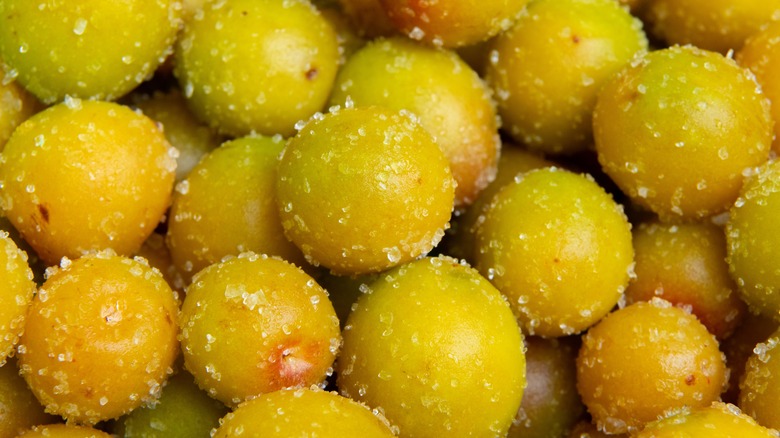The Fascinating Evolution Of Crack Seed, Hawaii's Favorite Snack
American food is a broad category, and although the 50 states certainly share a common culture, each one also has its own unique cuisine. Louisiana has po'boys, Illinois has Chicago-style deep dish pizza, and Pennsylvania has Philly cheesesteaks. This is true not just of savory items, but sweet ones, too. While perhaps lesser known than po'boys, deep dish, and cheesesteaks, candies like New Jersey salt water taffy, Floridian coconut patties, and the Idaho Spud still make their home states proud, per Matador Network.
Hawaii is no exception. When mainlanders think of food from this island state, there's a good chance they'll associate Hawaii with pineapples (even though the fruit isn't native, via Purdue University). But that's not all the state has to offer. According to Taste of Home, other popular Hawaiian foods include macaroni salad, poi, pork hash, shave ice, spam musubi, and the plate lunch. Hawaii also has unique types of candy, such as Chichi Dango (mochi), Haupia (coconut-milk pudding), and ube tarts (sweet yam shortbread), notes Roberts Hawaii. One other sugary snack we'd be remiss not to mention is crack seed.
How crack seed immigrated to Hawaii
The Japanese apricot tree (Prunus mume) is not originally from Hawaii, nor is it from Japan (though it is cultivated there en masse), according to North Carolina Extension Gardener. Instead, it hails from China and Laos, where it first began bearing its plums. In Hawaii, they're called Hawaiian sour plums. The seeds can be pickled alongside sugar, salt, and licorice, producing a special treat called li hing mui, per National Geographic. Eventually, the pit will actually crack apart, opening up, thus giving it the moniker "crack seed." The main, traditional use of crack seed is as a snack or dessert topping.
Chinese immigrants looking for work brought crack seeds to Hawaii in the 1800s. Knowledge of and demand for the snack spread. Nowadays, crack seed refers to more than just the plum pits themselves. The list of crack seed snacks is dizzying: Fig, ginger, guava, kumquat, lemon, mango, pineapple, starfruit, and more (via Food & Wine). Such fruity sweets can be found in dedicated crack seed shops, as well as corner stores and supermarkets scattered across the Hawaiian islands. Much of this comes from China, but Hawaii also supplies itself with the necessary ingredients, to at least some extent.
Crack seed. It's salty. It's sour. It's sweet. It's iconically Hawaiian.

